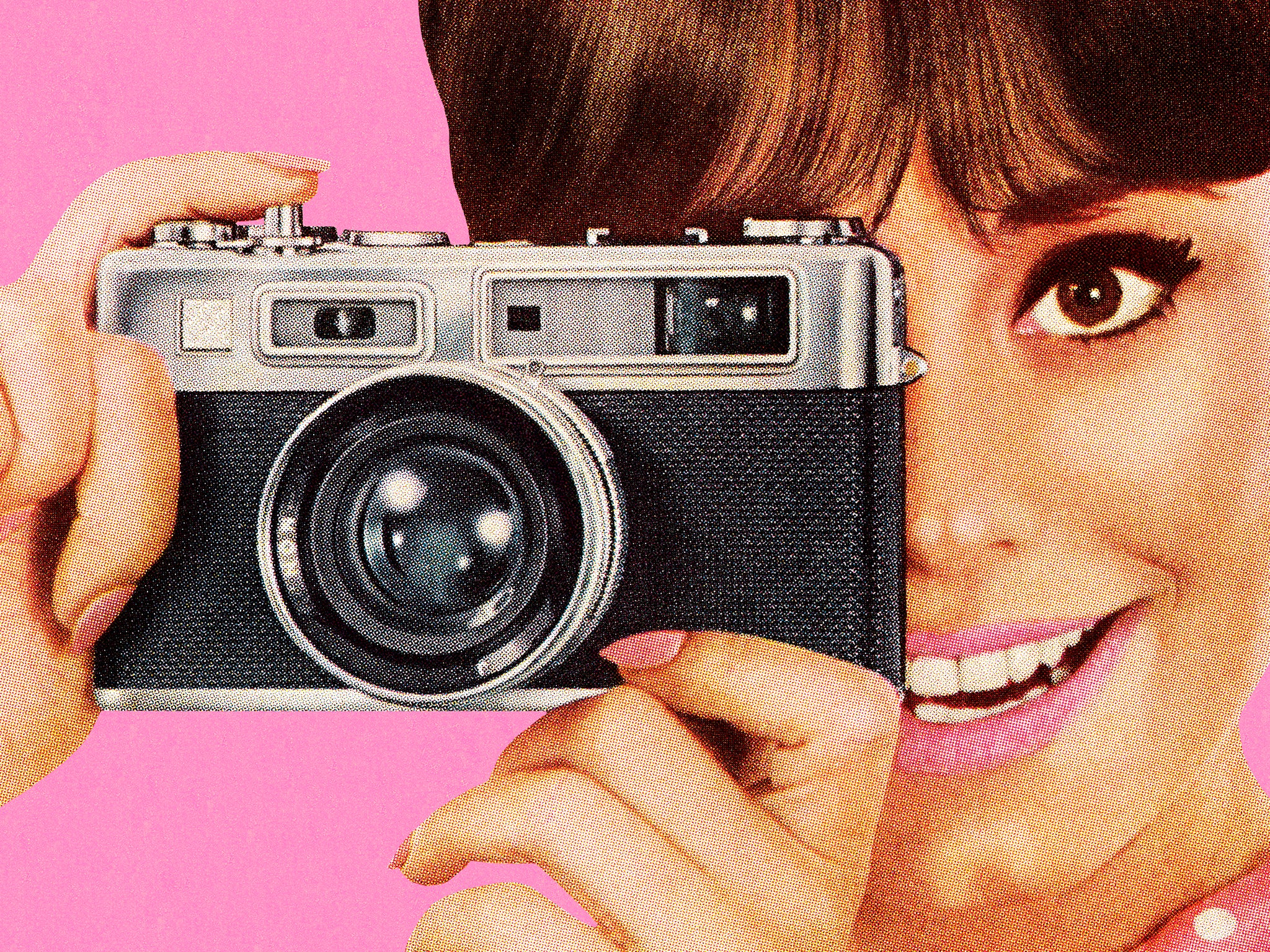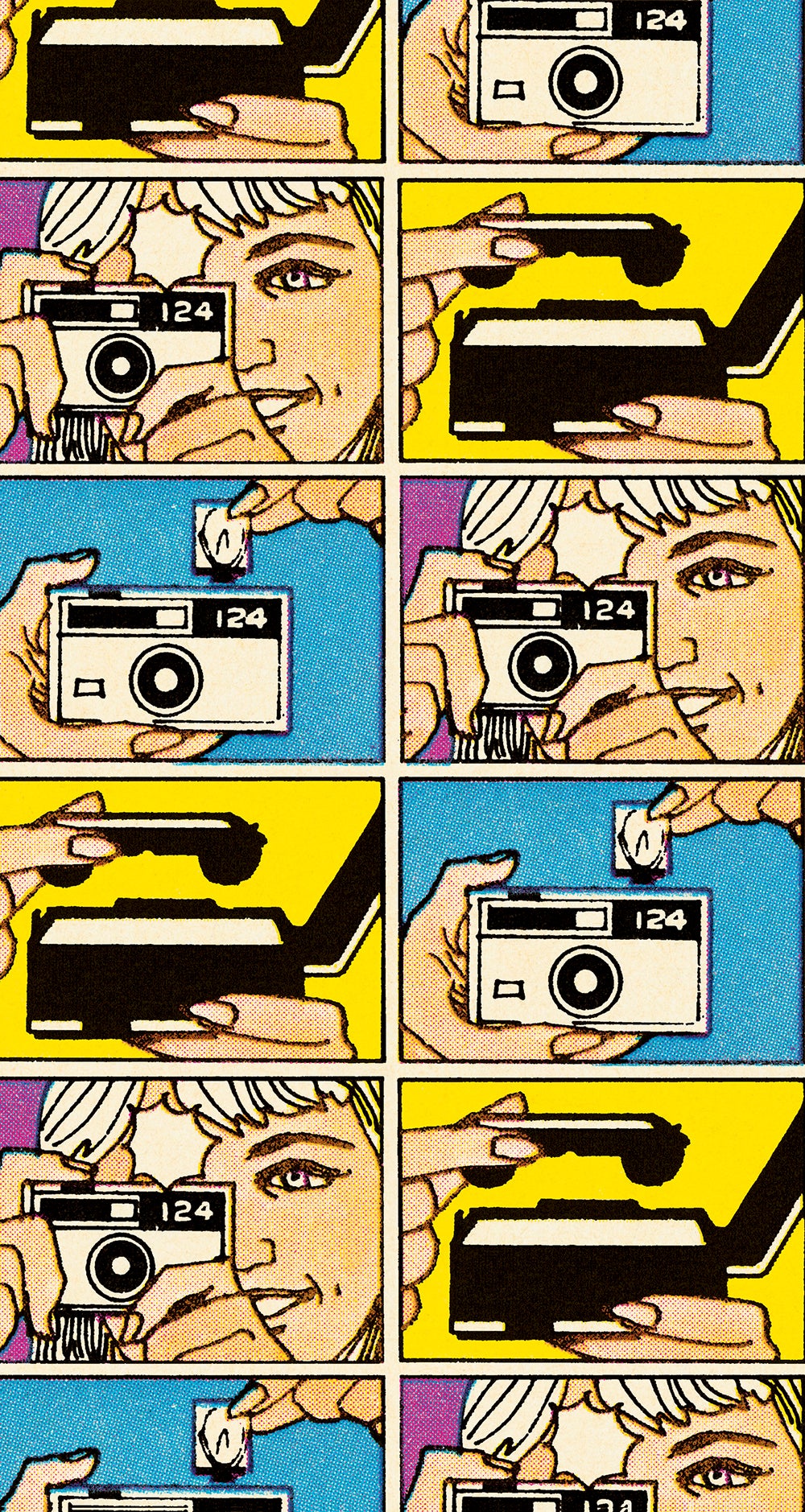Young people are falling in love with film cameras – but at a cost
After years of trying to achieve the grit and style of film via Instagram filters and editing apps, budding photographers have now embraced analogue photography. Hobbyist Isobel Lewis is one such convert, even as the availability of film becomes increasingly rare


Your support helps us to tell the story
From reproductive rights to climate change to Big Tech, The Independent is on the ground when the story is developing. Whether it's investigating the financials of Elon Musk's pro-Trump PAC or producing our latest documentary, 'The A Word', which shines a light on the American women fighting for reproductive rights, we know how important it is to parse out the facts from the messaging.
At such a critical moment in US history, we need reporters on the ground. Your donation allows us to keep sending journalists to speak to both sides of the story.
The Independent is trusted by Americans across the entire political spectrum. And unlike many other quality news outlets, we choose not to lock Americans out of our reporting and analysis with paywalls. We believe quality journalism should be available to everyone, paid for by those who can afford it.
Your support makes all the difference.Every day, I use the camera attached to my phone to capture memories and feelings – yet never quite achieve it. I’ve tried to store them in my phone, but they sit there unloved, taking up space in cloud storage and little in my mind. For real reminiscing, I turn to the albums I’ve collated since starting shooting on film. I feel the tangible weight of the book in my hand and flick through soft images of my friends and family, all taken on a second-hand point-and-shoot camera from 1998. Taken over the four years since I first discovered analogue photography, these photos are hazy and often out of focus, yet enable feelings and moods to flood back far more than an iPhone ever could.
As the imminent return of HMV to Oxford Street and the horrifying re-emergence of low-rise jeans can attest to, we’re firmly in an age of Nineties nostalgia. Film photography, whether taken on a cheap disposable camera, a fancy vintage model, or a new, pastel-coloured model from Urban Outfitters, is just another analogue artform seeing a resurgence among Gen Z. Phillip Grey works at Darkroom London, a community photography darkroom in north London. The studio also runs analogue photography courses, and he tells me that the vast majority of people who take part fall into the 20 to 35 age bracket. “[For] most of them, this is often their first encounter with a darkroom,” he tells me. “Even though they may have been shooting film now for a few years, they’ve certainly not had hands-on experience”. Those at the younger end might have been born in a post-film world, but are now eager to step into the past.
While high-quality digital photos can be captured in bursts via our phones, film photography is more precarious – there is a grit to the images, and an uncertainty baked into the process. Photos from a good roll can serve as a time capsule; incorrectly loading a camera can amount to an expensive pile of nothing.
Growing up, I never had much interest in photography (besides the pink digital camera I would take to concerts, later uploading all 180 photos from the night to Facebook albums called things such as: “McFly Bristol!!! Best day of my life!!!”.) Film photography was first dabbled with before I really knew what it was. In the big Boots in town, I would track down the last disposable camera for festivals and parties; the fuzzy, blurry pictures mimicking the hazy, Smirnoff Ice-fuelled memories. In 2019, I decided to give it a proper go, buying a cheap secondhand camera on eBay that broke halfway through the first roll. It was a learning curve (one I’m still on), but that was part of the fun! This was the first hobby I’d found as an adult – I wanted to invest my time.
Many factors are drawing young people to film photography, but primarily it’s to do with nostalgia. There is a film “aesthetic” that users of social media have always gravitated towards – filters were the norm in early Instagram, for instance, designed to emulate the grainy, golden-hour feel of 35mm film or vintage Polaroids. Today, the popular Huji app can lend digital photos the look of shots taken on a disposable camera, giving them a warm, saturated glow and even a 1998 timestamp in the corner.
Here, the appearance of film photos is the crucial factor, rather than the photographic act itself. Calum, a 26-year-old director who takes photos both casually and professionally, says that “everyone sort of knows the ‘film look’ – it can be hard to put your finger on at times, but something in the grain, the colour palettes, and the occasional light leaks or errors are far more emotionally engaging than an immaculate digital image.” Nothing sums this up more than the “iPhone versus Film” TikTok trend, where users take the same photos on their smartphones, then immediately again on film, highlighting the aesthetic difference in the images. The phone may have the technical quality, but film has the feeling.
There’s nothing wrong with using an analogue medium to post online – it is a truth universally acknowledged that everyone looks hotter on film, so why not? But taking old-school photos today can also allow us to push back against technology. Hugh, 25, works in theatre production and takes photos on film in his free time. He says that analogue photography makes the act feel like an art form again, where you’re focused on capturing the perfect picture rather than taking the same photo repeatedly. “It makes those images you capture feel a bit more precious,” he says.
I used to take film pictures much more regularly than I do now. It’s upsetting… The reality is that costs just keep going up
The popularity of film photography offers a brief respite from our “hurried and harried” digital age, Phillip suggests. “I think a lot of people just want to jump off that bandwagon and do something that’s a little bit more reflective and slow,” he says.
It takes time to use up a roll of film – whether your roll can capture 24 or 36 pictures – while trying not to waste any shots. The wait can leave you feeling excitement, anticipation, and even a sense of dread. When I went through a break-up halfway through a roll of film, I forwarded the developed photo file to a friend, asking her to take out any photos of my ex taken before my heartbreak began around photo 16. Some things you don’t need to see.
From purchasing your first camera to getting those images back, analogue photography can be a complex, costly process, though. You have to figure out how to use the camera, shoot an entire roll before you can get any developed, and get prints made before you can put together an album to pass around like an embarrassing parent. There have been ways to do it fairly cheaply, from buying used camera models on eBay to finding an affordable independent development lab. What cannot be avoided now, however, is the skyrocketing cost of colour film itself. In recent years, even the cheapest film has tripled in price, making this fun hobby inaccessible to most.
When I started shooting on 35mm four years ago, the film itself was the cheapest element. Three rolls of Kodak’s beginner-friendly ColorPlus, each giving 36 photos, could be picked up for less than £3 each. Now, though, the same film has more than tripled in price on even the cheapest of outlets. Naturally, we’re in a cost of living crisis, and inflation is making everything more expensive. But it’s an issue specific to analogue photography, too. Film is expensive to produce, while certain resources needed in the process are growing difficult to source for cost and environmental reasons.

FujiFilm, one of the few colour film producers, virtually ceased production in the last decade, while industry leader Kodak filed for bankruptcy in 2012. Kodak, however, has been able to profit from our nostalgia, dominating the colour film market once again. Their prices have steadily risen since 2019, which photography magazine Silvergrain Classics blamed on “the surge in demand for film and the subsequently necessary investment in machinery and personnel to keep up with production”.
Since then, Kodak has seen increasing profits, with Grey suggesting that their lack of competition has played a large role in the rising costs. Black and white film, which his lab specialises in, has also slightly increased in cost, but nowhere near the extent of colour. Calum has seen it with his own eyes. He’s stopped using Kodak’s premium Portra colour film – “the classic Instagram film stock” – which will set you back £20 a roll, and largely now uses black and white film from companies such as Ilford instead.
For many amateur photographers, the price of film means the hobby is being put on hold – or at least slowing down. Hugh, once a keen photographer, says he now largely saves film photography for special occasions, not wanting to waste expensive stock on less important pictures. “I used to take film pictures much more regularly than I do now,” he says. “It’s upsetting… The reality is that costs just keep going up.” Calum agrees, adding: “Half the fun of film photography is the experimentation. If your experiments cost you £20 a roll, plus development and scanning, it becomes quite hard to justify on grounds of ‘fun’.”
It’s a trend we’re seeing across the board. When everyday items are tripling in price and people are struggling to heat their homes, photography, naturally, isn’t a priority. But in a world where we’re increasingly pressured to work long hours and eschew hobbies – or, alternatively, to monetise them – it’s not just the hobbies we lose. It’s allowing yourself the time to learn a skill for fun, and in the case of analogue photography, capture moments you will cherish. Learning to shoot on film is a process of trying, failing, and trying again; I’d hate to lose that.



Join our commenting forum
Join thought-provoking conversations, follow other Independent readers and see their replies
Comments